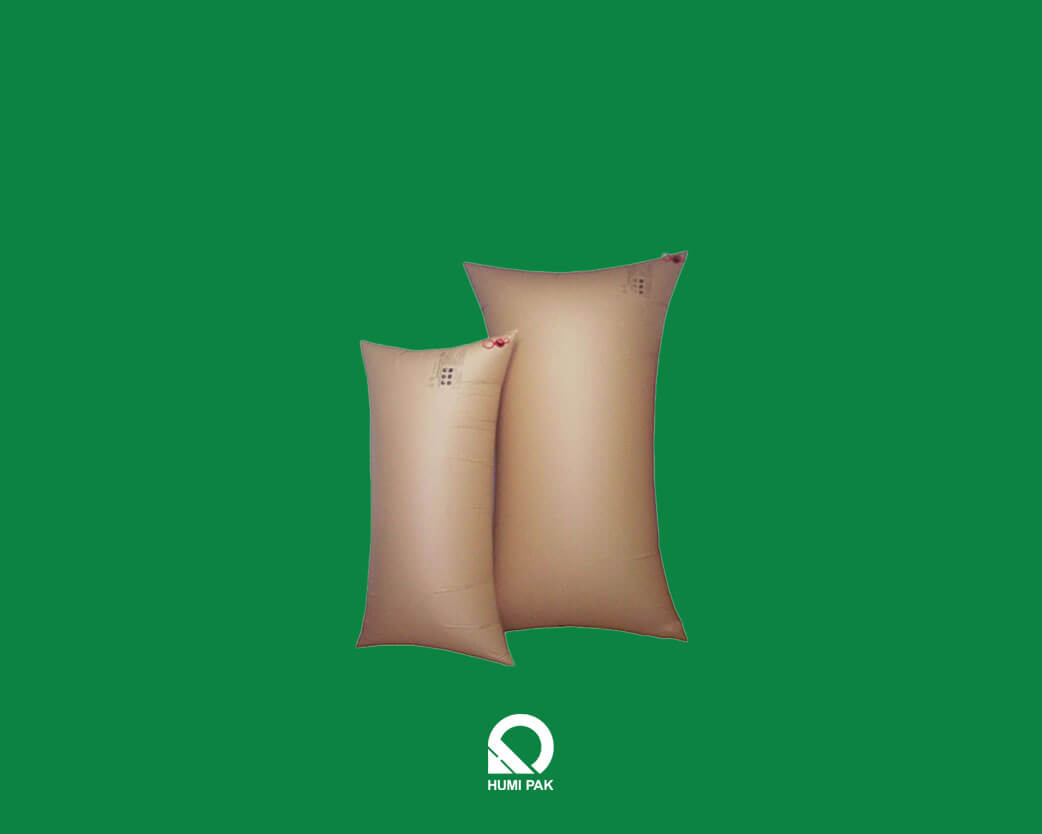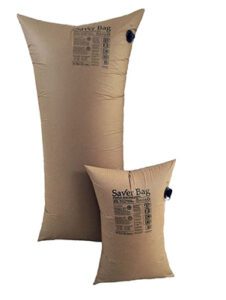All About Dunnage Bags

Dunnage plays an essential role in safeguarding cargo during transport and shipping. Comprising diverse materials such as corrugated plastic, foam, aluminium, wood, steel, and corrugated paper, dunnage ensures that cargo remains immobile and protected. Among the various dunnage solutions, dunnage bags are a load-securing solution.
Understanding Dunnage Bags
Dunnage Bags are essentially closed chambers constructed from a resilient, air-filled film. In a stationary state, the static load from the cargo’s weight rests upon these air cushions. However, during transit, as dynamic forces come into play, these forces are mitigated by the bag’s cushioning, compressing and absorbing shocks.
Notably, many dunnage bags are designed for reuse and recyclability. To qualify for reuse, the bag should remain intact and feature a screw-on quick-fill valve. Often called airbags or inflatable bags, the bags are paramount in stabilizing and safeguarding cargo within transport carriers. They effectively mitigate cargo movement and absorb shocks, ensuring goods remain undamaged throughout their journey during loading, transportation, or unloading.
By filling voids and gaps within shipping containers or trucks, they prevent the movement of goods and stabilize cargo. This minimizes the risk of damage caused by shifts, vibrations, or external pressures during transportation. The air-filled chambers of the bags act as a cushion, effectively absorbing shocks and impacts, ensuring that products reach their destination in the same condition as they were shipped.
Different Types of Dunnage Bags
 Dunnage bags are crucial tools in the transportation and shipping industry, ensuring that cargo remains protected and stable. Their variety in material, size, shape, and inflation methods makes them adaptable to various shipping needs
Dunnage bags are crucial tools in the transportation and shipping industry, ensuring that cargo remains protected and stable. Their variety in material, size, shape, and inflation methods makes them adaptable to various shipping needs
Paper Dunnage Bags (Kraft): Paper dunnage bags are ingeniously constructed using a dual-component system. The inner component is a polyethene inner bag designed to maintain pressure. It ensures that the dunnage bag retains its shape and provides adequate cushioning to the cargo.
Crafted from high-quality lightweight kraft paper, the outer bag boasts exceptional tensile strength, ensuring the durability and robustness of the dunnage bag.
Paper Dunnage Bags stand out due to their versatility. They are available in various strengths and sizes, tailored to meet specific shipping needs. While the inner polyethene component guarantees consistent pressure, the kraft paper exterior ensures maximum resilience against wear and tear.
For specialized applications, especially within the chemical industry, these bags can be enhanced with a polycoat. This additional layer equips the dunnage bag with resistance against specific chemicals, making it an invaluable asset for transporting sensitive or corrosive items.
Woven Polypropylene Dunnage Bags: Woven polypropylene bags are durable and suitable for dry and humid environments. They handle heavy loads efficiently due to their enhanced elasticity, which provides better contact with pallets.
The woven structure of these bags increases their resistance to tearing, making them reliable even in challenging transport conditions. Additionally, the material naturally repels moisture, ensuring goods remain dry. An added benefit of these bags is their potential for reuse, thanks to their durable construction, and they can be recycled, promoting eco-friendly shipping practices.
Polywoven Dunnage Bags: With their weatherproof design and resistance to harsh chemicals, they are optimally suited for medium to heavyweight railcar loads. Their ease of handling stems from being 60% lighter than traditional paper alternatives and their single-ply construction, which ensures a more efficient pack-out.
How Dunnage Bags Work
Dunnage bags protect shipments, ensuring cargo stability through strategic placement, appropriate inflation, and effective load stabilization.
Placement: Their effectiveness starts with their strategic positioning within containers or trucks. When preparing for shipment, it’s crucial to identify gaps or voids between cargo items. These gaps can lead to unwanted movement or shifts during transportation.
They are then placed in these voids to fill the space. It’s essential to ensure the bags are positioned flat, without any folds or creases, and evenly distributed to balance the load. Depending on the nature and configuration of the cargo, they might be placed between pallets, on the sides, or at the top, creating a tight fit that limits any possible movement.
Inflation: The bags must be inflated to the right pressure once positioned. This inflation expands the bags until they snugly fill the gaps, exerting gentle pressure against the cargo.
It’s crucial to strike a balance during inflation: over-inflating can cause undue stress on the cargo or even damage the bags while under-inflating might not provide adequate stabilization. Many bags come equipped with valves that facilitate easy inflation using manual pumps or automated systems, and some have pressure indicators to ensure optimal inflation.
Load Stabilization: With proper placement and inflation, the bags act as stabilizing agents within the shipment container. Filling voids and exerting consistent pressure create a rigid structure that binds the cargo together.
This prevents lateral or vertical movement, irrespective of external forces or jolts during transportation. The air-filled chambers of the bags serve as cushions, effectively dampening vibrations, shocks, or bumps. As a result, the cargo remains stationary, safeguarding it from potential damages due to shifts or collisions.
Industry Applications
Dunnage bags find applications across various industries, catering to diverse needs. Often used in logistics, storage-intensive environments of warehousing, or the specific demands of sectors like automotive or electronics, these bags ensure goods remain safe and secure.
Automotive: In the automotive sector, where parts can be bulky and oddly shaped, dunnage bags provide stability, ensuring components don’t shift and become damaged during transportation or storage.
Electronics: Electronic items are often sensitive and fragile. Dunnage bags offer the necessary cushioning and protection, minimizing the risk of impacts or vibrations damaging the products.
Food & Beverage: For products like bottled beverages or canned goods, which can be heavy and prone to movement, these bags ensure that products remain stationary, reducing the chances of breakage or damage.
Logistics & Transportation: In logistics and transportation, dunnage bags are indispensable. Whether trucks traversing rugged terrains, ships navigating choppy waters, or freight containers being hauled over long distances by rail, these bags ensure cargo remains secure. By filling voids and stabilizing loads, dunnage bags prevent damage from shifts or jostles, reducing the risk of damage during transit. Their lightweight yet robust design doesn’t add significant weight to shipments, keeping freight costs optimized.
Warehousing: Warehouses often house goods for extended periods, which must remain undamaged during their stay. Here, dunnage bags play a crucial role. When palletized goods are stacked or stored in racks, these bags can be used to ensure stability, especially for items prone to movement or toppling. They also come in handy during the internal movement of goods within the warehouse, ensuring that products remain intact and undamaged.
Conclusion
Dunnage bags have established themselves as an essential component in packaging, serving a critical role in cargo stabilization and protection. Their widespread application across diverse sectors, from general logistics to niche industries, attests to their efficacy. Humi Pak supplies dunnage bags manufactured using advanced German technology. For a demonstration and training in your warehouse, feel free to contact our packaging engineers for a no-obligation appointment.

